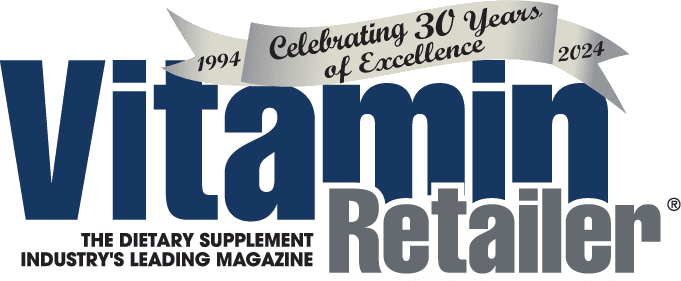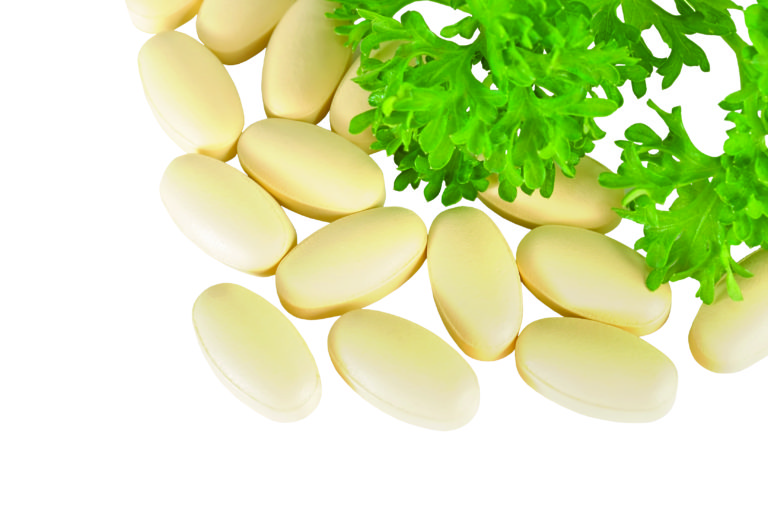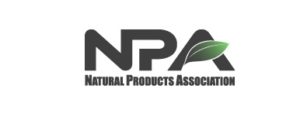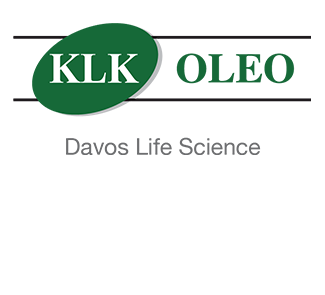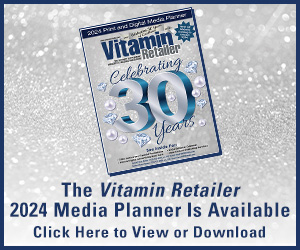Homeopathic manufacturers are answering the call for natural remedies by keeping American consumer demands in the forefront.
Homeopathic medicines have been in wide use for more than 200 years and are one of the most widely practiced medical therapies worldwide. Prescribed by hundreds of thousands of physicians throughout the world, homeopathic medicines are used in more than 80 countries by millions of people.
However, it is a relatively new system of medicine in the U.S., noted Vice President Cynthia Batterman of the American Association of Homeopathic Pharmacists (AAHP). Batterman also serves on the Board of Directors, the Publicity and Industry Liaison Committee, and is chairman of its publication. “AAHP members tell us that more U.S. consumers are looking for effective but safer alternatives to conventional medicines. Since a major advantage to this system of medicine is its safety, more consumers are turning to homeopathic medicines,” she said. “Historically, consumers most often sought homeopathic medicines at natural health stores and homeopathic pharmacies; today, that distribution has expanded to more mainstream retailers, providing consumers increased access to homeopathic medicines.”
The most recent estimates put category sales at $800 million (Mintel, 2007) , and AAHP members report strong growth in recent years that suggests the industry is still developing.
“The demand for homeopathic products is definitely rising,” agreed Joan sullivan, public relations and corporate communications manager with New Mexico-based Heel Inc. “According to the ‘Homeopaths in the U.S.: Market Research Report’ released by IBISWorld, the percentage of the U.S. adult population that uses homeopathy has increased by 44 percent from 2007-12, and we expect that trend to continue.”
Conventional medicine has changed a great deal over the years contributing to homeopathy’s growth, noted Ronit Arginteanu, Esq., with New Jerseybased Alquemiste, maker of Ateevia Botanica. “There is a growing prevalence of self-medication for pain. People wanting alternative medicines are the change agents responsible. They want to be empowered to make up their own minds on what is best—to be in charge of how their bodies are being treated.”
Although the category is growing, it still makes up only a small percentage of health food stores’ overall sales, according to retailers. “Americans are way behind compared to Europe,” said Bernard Bubman, registered pharmacist and owner and president of Earthbar, a 12-store chain in California. “Americans aren’t really aware of homeopathy, so it’s a very limited market.”
Increased Interest
Health care reform and insurance policy changes coupled with consumers’ rising interest in natural alternatives have contributed to the growth of the homeopathic market, according to Heel’s Sullivan. This increase in consumer demand has benefited many Heel brands, including the Traumeel pain relief product lines, she said. Heel has also responded to this demand by creating a new brand of cold and flu medicines, Reboost, which the company debuted at the 2013 Natural Products Expo West and will launch later this year. “These products help meet the increasing consumer interest in medicines with natural ingredients, including homeopathic products that provide relief,” Sullivan said.
Arginteanu also noted the effect consumers looking for safer pain relief is having on homeopathy sales. “According to the American Pain Foundation, 76.2 million people are affected by pain. There is the stark recognition that many conventional therapies like NSAIDS (non-steroidal anti-inflammatory drugs) can cause serious peptic ulcers, and others can compromise renal activity, including liver/kidney function. One cannot ignore the COX inhibitors recently pulled from the market because while they target the COX2 enzyme responsible for causing inflammation, they also caused heart attacks, thrombosis and strokes as a consequence. That means in trying to treat one problem, certain NSAIDS are creating another,” he said.
“This understanding is what is driving the estimated eight to 10 percent annual growth within the natural holistic pain industry,” Arginteanu continued. “People are looking for safer remedies.”
Retailer Bubman noted another development: conventional doctors and chiropractors are becoming more aware that homeopathic products offer natural alternatives with no side effects, and are suggesting them to their patients. “There is a demand for products such as arnica. Doctors know about it and are recommending it post surgery,” Bubman said.
Natural & Familiar
Manufacturers say consumers want homeopathic products to work much in the same way allopathic medicines do. “There is a demand to utilize natural, plant-derived therapies that work in the same way that synthetics do. We know that plants have always been a rich source of medicinal compounds (i.e., penicillin, alkaloids, quinine, digitalis, morphine),” said Arginteanu, adding that other clinically useful drugs that have been recently isolated from plants include the anticancer agent taxol from the yew tree and the antimalarial agent artemisinin from Artemisia annua.
“Plants provide a large bank of rich, complex, highly varied structures that are unlikely to be synthesized in laboratories,” he said, offering Ateevia’s PRIME, which harnesses extracts of pumpkin and borage, as an example. “Much like NSAIDs such as aspirin, pumpkin extracts rich in beta carotene have properties which minimize the COX-2 pro inflammatory pathway. Likewise, borage has one of the highest amounts of gamma-linolenic acid (GLA, also known as omega-6).”
Overall, products that provide relief with rare side effects lead the category, added Sullivan. “Consumers are looking for products that will help relieve their pain or cold symptoms with impressive safety profiles. That’s why Heel has focused on delivering Traumeel pain relief product lines and Reboost cold and flu products to meet these demands.”
The recently unveiled Reboost line of products from Heel brings together four of the company’s cold, cough and flu products under a single brand, Sullivan explained. These products include Reboost Nasal Spray for the temporary relief of minor nasal symptoms, Reboost Throat Spray for the temporary relief of minor pain from sore throat and pain from canker sores, Reboost Tablets for the temporary relief of flu symptoms and Reboost Cough Syrup for cough and chest congestion relief.
Retailer Anthony Qaiyum, president of Chicago-based Merz Apothecary, agreed. “Homeopathic products have been growing quite well for us this past year,” he said. “Allergy formulas and pain/inflammation products are the strongest movers. I’ve observed a varied group [of consumers] buying these products—lots of young families, but many older customers as well.”
Developments
According to Arginteanu, in the topical pain relief category, there is a movement away from menthols, capsaicin and salicylates in favor of natural blends of botanicals with studies to support their efficacy. He also noted that there is a preference for topical applications as opposed to supplements.
“With our Ateevia Botanica products, we have perfected a transdermal delivery of magnesium phosphate as well as a manufacturing process that preserves the integrity and ‘freshness’ of the botanical extracts themselves,” Arginteanu said. “Avoiding processes such as heat, and maintaining the ‘crudeness’ of the botanicals allows the phytonutrient content to remain potent, which translates into compelling results.”
Though not necessarily new, Sullivan said it is important to provide products with different delivery mechanisms to meet consumers’ needs. For instance, Heel offers Traumeel pain relief as ointment, gel, oral drops and tablets.
As for effectiveness, Arginteanu said Alquemiste has been monitoring the research from Japan and Korea that evidence the efficacy of plant-derived ingredients on inflamed human cells (e.g., epithelial cells). “We can now see that many of these ingredients can have a strong physiological effect when applied transdermally.”
Similarly, Heel has put its focus on research that showcases its products’ efficacy and safety,” according to Sullivan. “These are of the highest importance to manufacturers, as well as retailers and consumers. An example of this is a recent study that shows Traumeel can provide pain relief for ankle sprain that is equivalent to a prescription diclofenac topical,” she said.
Sullivan noted a trend that retailers will likely begin to see from manufacturers. “Consumers are beginning to look for solutions that meet their needs at their particular life stage,” Sullivan said. “While manufacturers may have been focused on therapy areas in the past (e.g., nutrition, pain), as consumer interest in natural products grows, manufacturers will need to provide products that address concerns in their various life stages, such as parenthood and aging.”
Reaching Retailers
Homeopathic manufacturers are expanding marketing options to convey their messages. “Since homeopathic medicines are appealing to a broader consumer audience, we see manufacturers increasingly applying more traditional sales and marketing tactics,” AAHP’s Batterman said, noting that AAHP members are using everything from instore awareness-building tactics such as displays, on-shelf coupons, bonus-packs and trial sizes to very mainstream trafficdriving efforts such as TV and internet advertising to coupons in Sunday papers. “Homeopathic medicine manufacturers have also always done an excellent job of providing in-store training and support for sales associates to help increase knowledge and sales at the store level,” she noted.
This is significant because recommending homeopathic products is ‘an art’—”it’s hard to do that in a retail store setting,” according to Bubman.
In addition to natural products research that is available from SPINS, Natural Marketing Institute and Nutrition Business Journal, homeopathic manufacturers also increasingly utilize mainstream data such as Nielsen and IRI data, Batterman added. “Homeopathic manufacturers also conduct their own customized traditional market research such as focus groups and attitude and usage studies, and they are always interested in further clinical research and data on the effectiveness of ingredients,” she said.
This is the case for Heel. According to Sullivan, the company is committed to providing retailers with necessary information, such as newly released studies on product efficacy and safety, to help convey the important messages to consumers.
Further, Heel is meeting the needs of retailers by releasing new packaging for the Traumeel pain relief product line. The newly redesigned Traumeel packaging is vertical and will soon provide more shelf space for savvy retailers. “To highlight that point, the top-selling two SKUs of Traumeel are the 50 g ointment and the 100 g ointment. Retailers will see a 66 percent savings on shelf space for this new vertical design,” said Sullivan.
As an affordable, gentler alternative to pharmaceuticals, Lou Paradise, president and product formulator with New York-based Topical Biomedics, makers of Topricin, said homeopathy as a platform represents one of the finest sustainable models for 21st century health care available today.
“It provides a viable, living, breathing set of options and new standards for individuals/patients suffering, and practitioners who need better tools and treatment options. And it is our experience that homeopathy can and does complement any scripted conventional care/environment,” he said. “According to the conventional medical community I interact with, we are providing a substantial benefit … a bright spot to rally around in the very confusing world of chemical pharmaceuticals. As such, we are counteracting the complexities and extremely trying times our nation now faces in light of massive addiction to scripted narcotic medications, which has reached epidemic proportions.”
